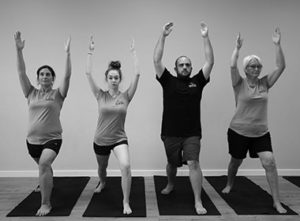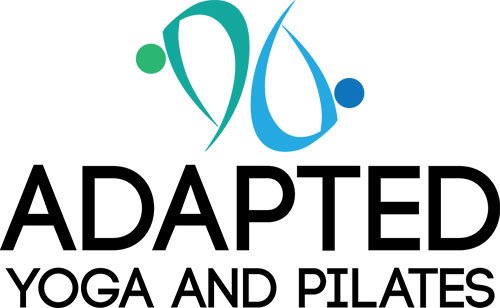Hands up if you would like to be able to breathe better, feel calmer and be more relaxed.
Maybe, take a moment to just breathe.
When the world around us feels so busy and changeable it is very normal to be experiencing feelings of overwhelm, lack of energy and stress.
The great thing is there are many ways in which you can manage these experiences and find a little bit of freedom and space for yourself.
I guess, one of the challenges that occurs when we are a bit overwhelmed is that everything that would help, can sometimes get spun around in the mind to be harder than it is. An incredibly common conversation I have with our overwhelmed students is how to make it easy for them to climb out of the overwhelm and stress spiral.
Have you ever been in that place before?
Where you know what you could do to feel better, its just that, well, it just feels a little bit too hard. In fact, in a way sometimes you put barriers in place where there need not be one?
Go on, take another easy breathe.
Firstly, recognising where you are at, is an incredibly important step, and acknowledging that you are ready to prioritise your health and happiness is a massive accomplishment.
Now that you are ready- what can you do to climb out of the spiral of overwhelm, under-energy and stress?
THE BASICS TO GETTING STARTED
- Create an inspiration account: Invest some time reflecting on how you are feeling now and what is challenging about this in your life, for example I am really exhausted at the end of the day and this is impacting on how I spend my quality time with my loved ones. By taking time to acknowledge this and take stock, you will help create the fuel to support you towards happier habits.
- Take an honesty audit: It is really easy to not be accountable to ourselves. Where in your life may you be fibbing (just a little of course!) too yourself. Are you really nourishing your body with beneficial foods, hydration, sleep and movement? Or maybe you are choosing options that might later reflect back with tiredness, lack of energy and stress?
- Make a list: Identify the top 5 things that will help you feel better, maybe making sleep a priority (yup screens down an hour before bed!) or making time to get on your mat. Then put them in order- easiest things first through to the more challenging.
- Get support and get started: Get some support- its all too easy when we are exhausted to make changes no matter how good they are for us. Talk to your fab Grassroots team and create your own cheer squad that will help you help yourself (this is one of the most popular conversations we have in our free consults). Choose the first and easiest step in your list and make it happen!
- Consistency over perfection: This is not at all about perfection- there does not need to be an overhaul of your pantry, a new bed nor 5 classes a week. It is about doing the easier things, that help you feel happy and healthier, regularly. So that means if you miss a day, shake it off, start again tomorrow- it does not mean you are useless and to just give up for the whole week, finish the bag of chips and start again perfectly next Monday!!
If you think that you need a bit of an easier entry point to getting back on the mat, we are here to help- accessibility is a very important aspect of why we have created all different options to overcome the challenges of time, cost, travel, injuries & illness and energy levels.
BREATHING IS YOUR FRIEND
Now, I’m sure that it is of no surprise to you that breathing is helpful to staying healthy and happy!
I guess a challenge about breathing, because it is a process that requires no conscious thought to do (thank goodness!) is that we kind of, well forget about it and take it for granted.
In Yoga, breathing is pretty important and we do different practices to change the energy we can create with our breathe. These practices are best to be learnt in a guided and supported environment as they can be incredibly powerful.
Something that you can do anywhere is to simply bring awareness to your breathing. Without trying to change or control your breathe, noticing the mechanics of your breathing and the effects of this, will create tremendous benefits to both your physical experience and your cognitive state. The challenge with this is that it is such a simple and easy thing to do. So it is easy to overlook breathe awareness and try and do something more exciting and fabulous, than just boring old breathing.
TRYING TO ‘CALM DOWN’ IS LIKE A RED FLAG TO A BULL
Sometimes we have pretty high expectations of ourselves.
It is not a common experience to be calm all the time. Especially when we try to juggle many balls and load our balancing acts of life to brimming.
Going through an emotional spiral of chastising ourselves, trying to push a little harder and simply giving up (believe me I have a lot of experience with this!) is neither helpful nor effective.
An option may be to just acknowledge how you are feeling.
-What is your emotional state?
-What is happening cognitively for you?
Notice and then step away from the emotional reaction. Remember our thoughts and our emotions are not facts. Allow yourself to experience, and just like with the breathing exercise, give yourself the permission to not change nor control the experience and let it be. This permission of time and experience will help support a more informed response to the situation/s.
Now, like most things, because it is simple, it does not equate to easy. As with all skills, this requires regular practice- do not expect expert level immediately!
JUST RELAX
As with the above, in my personal experience if I was encouraged to just relax when I am hyper stressed….. well let’s just express it as, it would not be a hugely effective cue!
Sometimes the harder we try, the harder it gets.
Allow yourself some time to drop your own expectation of what is expected of you (often of what we expect from ourselves). A definition of stress is that it is “the perceived imbalance between the demands of the situation and our ability to deal with it”.
Perception- our lens of the world, or how we see a situation, can be influenced not only by our past but also about our current state. So ensuring we are ‘full’ (nourished with movement, nutrition, rest, fresh air and connection) can influence our perception. Along with taking a moment to reflect on what might be some different ways of seeing a situation.
The demands of a situation- what is it that we are seeing as challenging?
Are these demands in fact at all within our own control?
Should they be?
How can we increase our ability to deal with a situation. Often, it can be taking a moment out to refresh, recharge and rethink.
SO HOW DOES THIS ALL RELATE TO YOGA?
We practice and reflect on these concepts and ideas within our physical practice. Often your teacher will weave these ideas within your class (often without your awareness).
Practice is to ensure that our physical layers are strong and flexible, along with our cognitive and energetic layers.
Having an experienced and caring guide helps our journey, by creating the space and mentoring when required.
Yoga is much more than a down dog and being able to touch your toes, in the words of the Yoga Sutras it is Yogas citta vrtti nirodhah: yoga is the cessation of the modifications, or fluctuations, of the mind. This sutra gets right to the heart of why we practice yoga.
So what are modifications of the mind? Simply put, it’s the mind chatter that draws our attention away from the present moment. When you are in yoga class, focusing on your breath while feeling the movement of your body and suddenly you wonder what you’ll have for lunch, or you remember a conversation you need to have with someone, or you look over at the person next to you and wish that your pose looked like hers, your mind is fluctuating—you are no longer present. These are the modifications of the mind that yoga is trying to quiet.
This goal of yoga is simple but not always easy. Our minds are so conditioned to follow thought strands that take us from topic to topic, anywhere but where we currently are. Becoming caught up in our thoughts feels natural to us because we do it almost all the time. Quieting this chatter, using the tools of the yoga practice, can feel almost impossible at times. This is one reason why many people find meditation to be intimidating. “I could never sit still and do nothing,” they say.
But with practice, over time, quieting these fluctuations starts to feel natural, even effortless. Space opens up in our minds as we learn to remain focused on the breath, the body, the moment. And in this space can be planted the seeds of insight—those realizations that bring us closer to our true nature.
